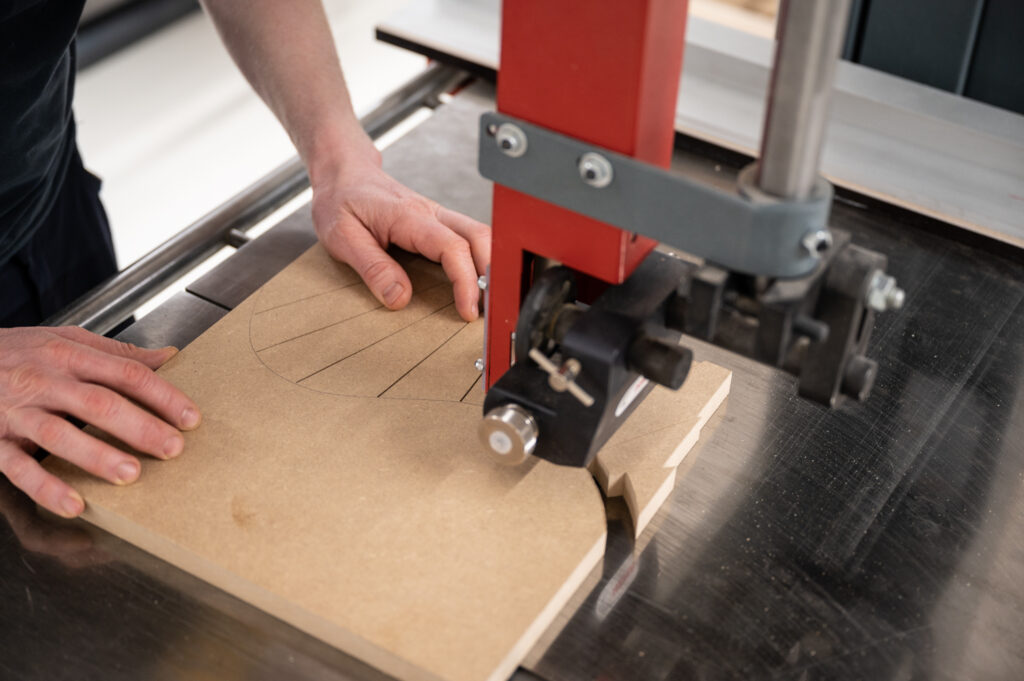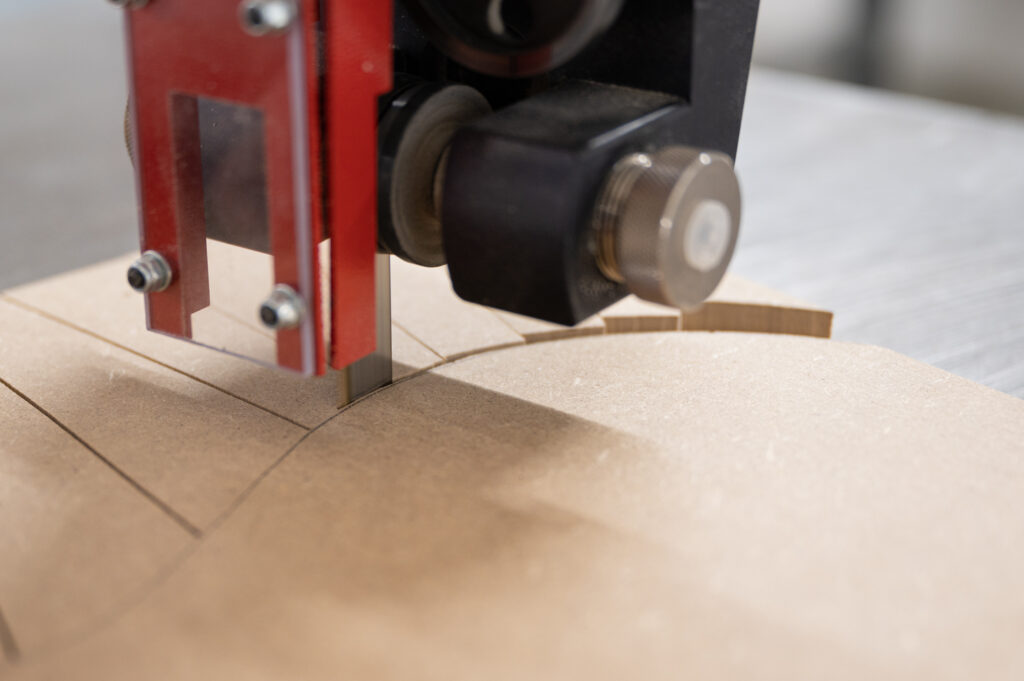Bandsaws are typically used to cross-cut stock to a specific length, to rip material to width, or for joinery applications. The Bandsaw can be regarded as an advancement to manual sawing and helps speed up many operations that can also be done with a good handsaw.
In our context, model, and prototype building, the bandsaw primarily prepares wood for final sanding on the disk sander. To execute our cuts, we either measure the distance from the sawblade to the fence while the saw is turned off, lay out our parts with pencil and cut to the line or print a template and mount it with spray adhesive to have a guide for cutting and sanding.
#1 On/Off switch
#2 Saw blade guide assembly
#3 Rip fence
#4 Bin for offcuts
#5 Knob/wheel to adjust guide (#2) position
#6 Knob to lock height adjustment (#5)
#7 Guide post
Narrow blades (1-8mm) facilitate curved cuts and allow for intricate work. The blade shown here is from our scroll bandsaw and is typically used for extremely small radii and cutting softer materials like styrofoam.

Cutting curves on a bandsaw with a broader blade is possible if you create incisions along the curve first, as shown in the image above.

This technique reduces the amount of curvature between the individual segments significantly so that the blade is able to follow the line accurately.
The bandsaw is one of the safest machines in the wood workshop if a couple of basic rules are considered before turning on the machine. The machine is mainly used to prepare stock for sanding or planing. The proper use and adjustment of the blade guard, the push stick, and the push block dramatically decreases the risk of injury and helps with accurate cuts. The workpiece must rest securely on the work table at all times, and custom setups must be developed for round stock or workpieces with no flat side.